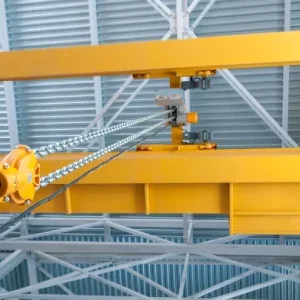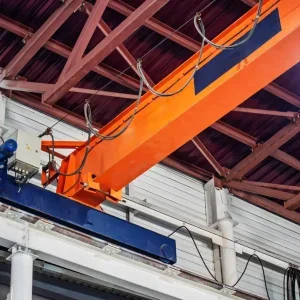Shanghai SUS Environment Co has called on Terex Material Handling for three of its semiautomatic Demag process cranes, which will be used for refuse incineration plant at its site in Yinzhou, a district of Ningbo
The new cranes will be used for storing materials, as well as assembling the correct blend of fuel and for serving the furnace. In future, the three doublegirder process systems will run in semiautomatic mode, and also in manual mode if required.
They will handle 4,500 tons of refuse and feed another 2,250 tons to the three incineration lines each day The grabs employed on the system to pick up the material each have a volume of twelve cubic metres and an active integrated load-sway damping system. This feature prevents load sway and protects against damage to the grab and bunker walls result from collisions.
Dr Thomas Bönker (pictured right), senior director of global product management & process cranes at Terex Material Handling, explains: "Due to the high population density, Chinese cities generate a particularly large amount of refuse.
We are therefore all the more delighted that our crane technology helps transport the rising volume of refuse to be processed as fast as possible.
"In this way, Demag cranes also actively contribute towards protecting the climate and the environment."
The company’s trio of cranes undertake key functions at the start of the process sequence in the refuse incineration plant, clearing the tipping areas in the delivery zone and place the material in the refuse bunker.
Restacking refuse on multiple levels, ensures they play a decisive role in homogenising the material to be incinerated, with the process and controlled feeding of the required quantities of refuse ensure constant incineration rates in the three furnaces. The manufacturer explains: "The process cranes commissioned for this project have a span of 35.9 metres, a load capacity of 18 tons and are designed for a lifting height of 41 metres. "The cranes travel on a 114-m-long crane runway and are equipped with position measurement and distance monitoring systems. Their lowmaintenance multi-jaw grabs have a capacity of 12 cubic metres.
"The refuse bunker is 90.4 metres long and 29.4 metres wide. Each crane will handle around 2,250 tons per day for clearing and blending processes as well as for feeding the incineration furnaces. "These very high handling rates are achieved by high working speeds with long-travel motions up to 100 m/min, cross-travel motions up to max. 90 m/min and load- dependent lifting/ lowering up to 90 m/min, and the active Demag anti-sway system for fault- free operation."
According to Terex, the semiautomatic cranes couple the requirements of the operator for manual operation of the cranes with the advantages of automatic operation. So to guarantee constant supply of the furnaces, configurable storage strategies are integrated in the crane controls to ensure automatic positioning and filling of the three incineration lines.
Alternatively, Terex explains, the cranes can be fitted with a clamshell grab that has a load capacity of 2.5 tons. This is used to remove any piles of refuse caught in the feed hopper or to fetch specific objects from the refuse bunker
The manufacturer explained: "Our process cranes are designed and built to meet the specific requirements of your production processes.
"In this way, we ensure high safety, efficiency and availability for your installations.
"We have extensive expertise and knowledge of our customers’ specific industrial processes in many industries. These include a range of sectors that span paper, process integration, recycling and bulk handling, aircraft, steel production and steel handling.






